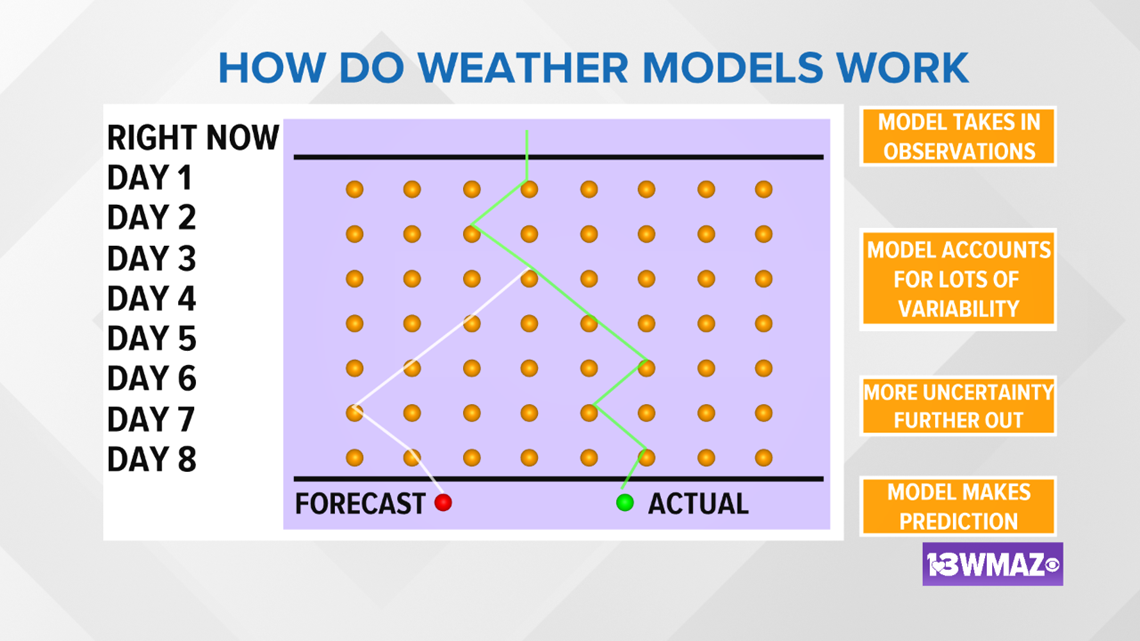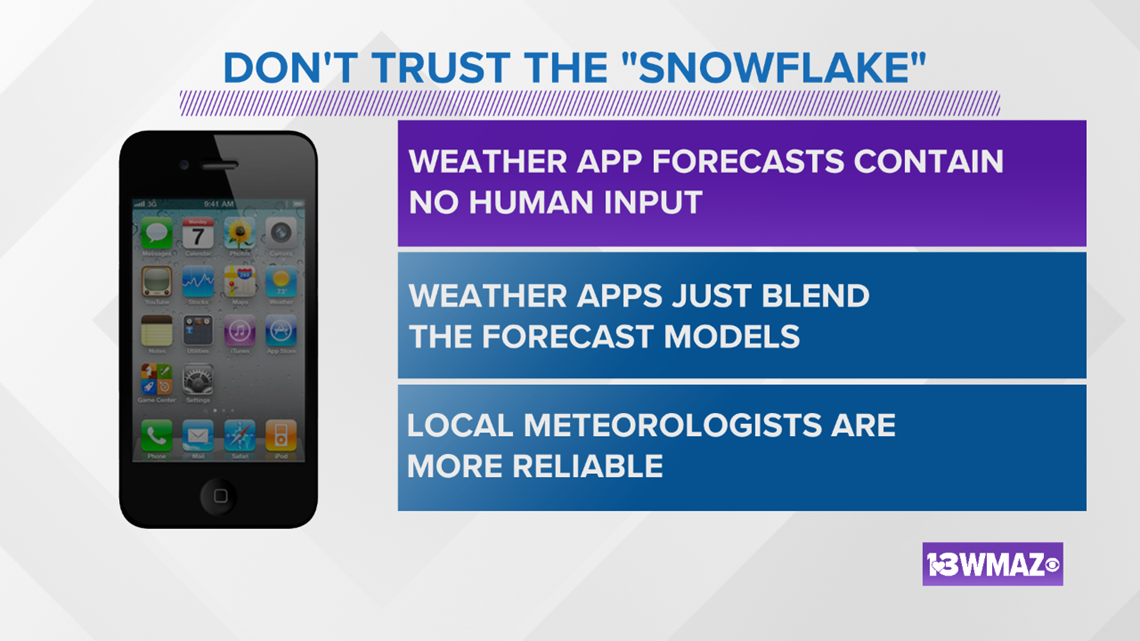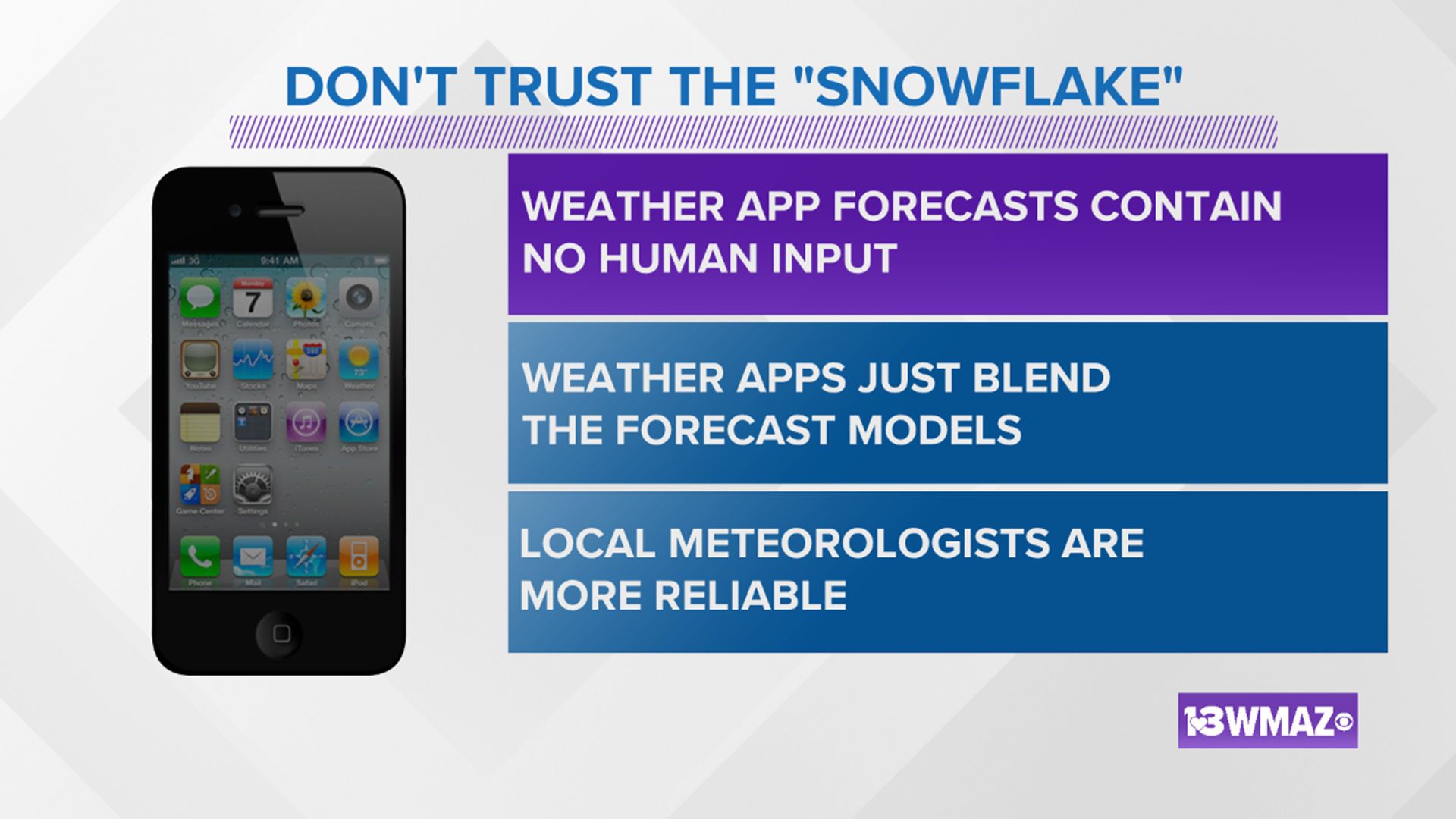MACON, Ga. — It's winter and you've probably heard rumblings on the possibility of snow or ice several times in recent weeks.
A lot of these rumors originate from the snowflake icon showing up on the forecast of a cell phone weather app. A few days pass and then snow is suddenly no longer on the forecast. Why is that? It's all about numerical weather models and how cell phone apps use those models.
Before we get to cell phones, here is a crash course on how weather models work. We have several weather models we use to make a forecast.
To those outside the weather community, their names sound like alphabet soup. We have the GFS, ECMWF, NAM, RPM, and CMC to name a few. All of these models work in a similar way.
A forecast model run begins by the model taking in the current conditions. The model accounts for weather observations, weather balloon data, radar and satellite data all to get a picture of how the atmosphere is behaving at the current time.
Next, the model sends those observations through a series of highly complicated equations to project what the weather conditions will be like in one, three, six, or more hours later depending on the model.
This first iteration, or step, of the model becomes the "observations" for the next iteration. The model goes through all of those calculations again to provide the next part of the forecast. This cycle continues as the model paints a picture for what the weather may be like for days or weeks into the future.
Forecast model accuracy decreases as time away from the present increases. Check out the graphic below.
All of those dots indicate some variation that the forecast model had to account for. Something that happens on day 3, can change how the model predicts something for day 4, etc.
While models may be very accurate for what happens over the first few days of a forecast, that accuracy goes away further in time. This is why the day 7 part of the forecast can change so easily and frequently.


Since the forecast models, such as the GFS or European model, may simulate the atmosphere differently over the course of a week, models often disagree with each other.
One model may be dry while one is rainy. One model may show brutal cold and snow while another shows sunshine and 60s.
Not only can the individual models disagree with each other, a model can disagree with itself.
While we only show you one run of a model on TV, there are often "ensemble" models that run behind the scenes. The American GFS model has 21 ensemble members. The European ECMWF model has 50 ensemble members.
Meteorologists take all of the ensemble members into account when forecasting. When ensemble members agree, forecast confidence increases. When ensembles disagree, meteorologists are here to sort through the mess.


What about your cell phone and that snowflake a week from now? As you can tell from the info above, there is A LOT of data to go through when making a forecast.
Automated cell phone weather apps do not know how to forecast. If any one of those models shows snow or ice, or any of the ensemble members show snow or ice, you may get that snowflake icon.
Cell phone weather apps also do not contain any human input in their forecasts. There is no one combing through the data to decide which models are handling a situation the best, or which model is often more correct in a given weather situation.
The user of a cell phone app is left with a forecast that may very well be less accurate than what their local meteorologist has made by going through the data.


The vast majority of meteorologists that you watch on TV have degrees in Atmospheric Science or Meteorology. They have gone through the rigorous training that it takes to understand the atmosphere, understand the math behind the models, and understand how to best make a forecast.
You can always find our forecasts on air, on social media, and on the weather portion of the WMAZ mobile app.
Read the weather story that our meteorologists take the time to type up, and you will get a more accurate picture of what to expect when compared to your phone's default app.
RELATED HEADLINES

